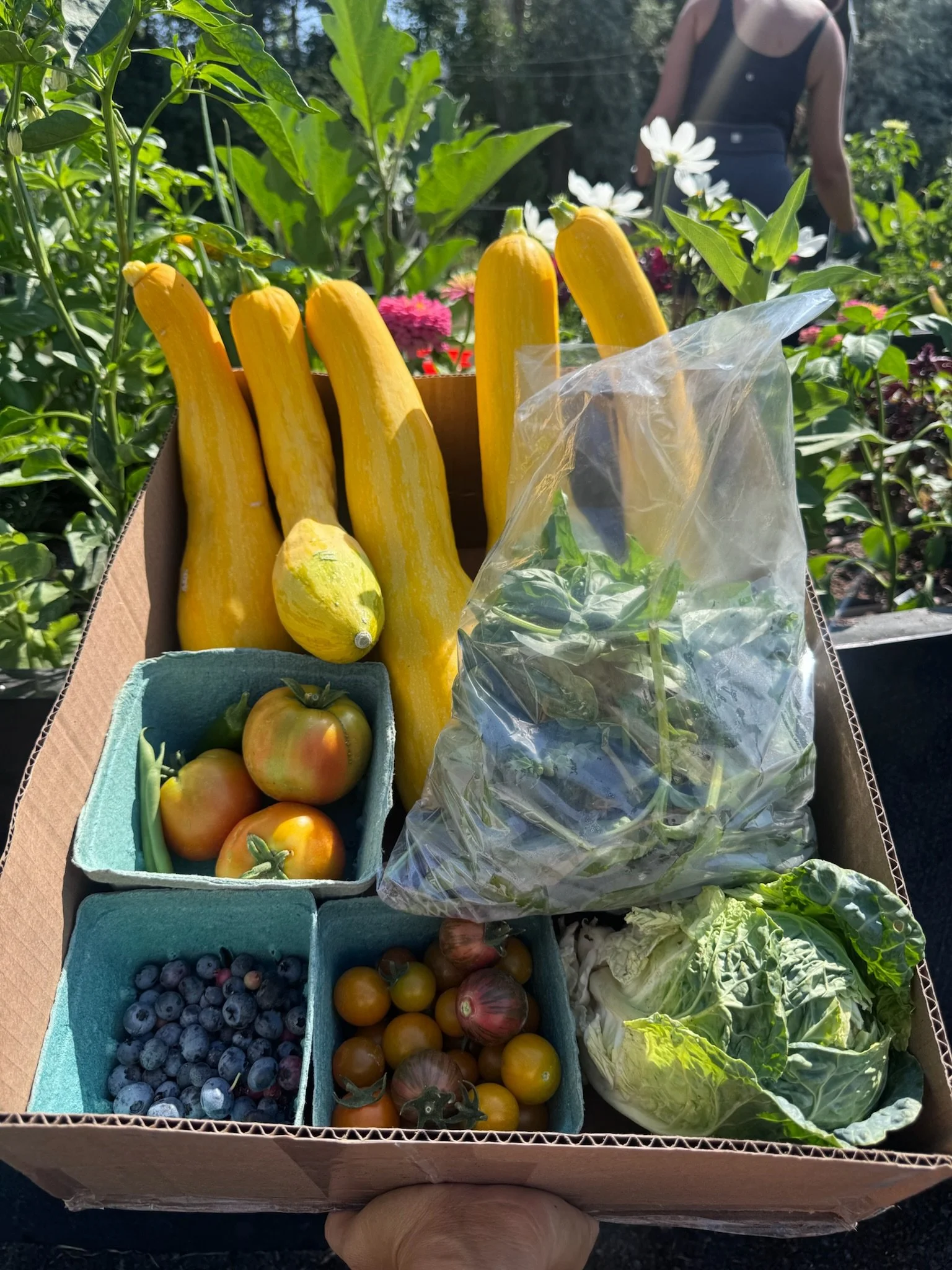Supporting Your Summer Garden
I’ve received a lot of messages this week about different garden aspects I want to address here on the blog. Read along - I hope it helps you problem solve in your own raised beds in Boise. As always, contact us directly to get help in your garden 1:1 at hello@goldfeathergardens.com.
Today’s garden harvest at a maintenance garden in Eagle
Water
Too much? Not enough? Our summer watering schedule baseline is twice a day, once in the morning between 6-8 a.m. and once in the evening between 8-10 p.m. Our timers are set to 15-20 minutes depending on the size of our raised beds and what’s planted. If your plants have yellowing leaves, you could be under watering (or overwatering), so dip a garden tool into the soil of your raised beds to see if it comes up clean (too dry) or muddy (too wet). I call this the reverse-brownie-batter test.
Soil
It’s the time of year when we are regularly fertilizing our gardens (naturally, of course!) with bone meal (high in phosphorus) and compost (specifically a manure-based product called Harvest Supreme OR worm castings, depending on how much soil is needed). Your garden is using up organic matter to produce your veggies, so you have to add organic matter for it to continue! Our goal for the beds is to be full to the brim with soil, especially because we aren’t planting anything new until August. The fruiting plants (tomatoes, peppers, etc.) need phosphorus to finish the job from blooming to fruiting, and the manure based compost helps sync all that nutrition in and keep it in the soil (versus being exposed to the sun).
Pruning
“My squash plants are taking over the beds! My tomatoes are out of control! My peppers are too shaded from other plants! ” I hear this constantly. PRUNE! Prune! prune! Set a time for 20 minutes and prune 1/3 of the green leaves (and any brown/yellow ones) from each plant. Prune for air flow, or for containment, or for spacing from other plants. Your garden is your domain, so prune it the way you want it to look and feel.
Harvesting
Another common question I’m getting from gardeners is “How do I know this is ready to pick?” A lot of fruiting plants needs to display a close-to-uniform shape and color when they’re ready to pick. For example, tomatoes and peppers start off green, and then turn to red (or orange, purple, etc.) so look for uniformity. Pick earlier than you think you should if you’re nervous about it. This is especially true for squash and cucumbers, as they dry out if they aren’t picked soon enough. With flowers, the more you pick, the more they bloom so don’t feel bad about picking them to enjoy in the house.
Pest Control
Summer is high season for pests like aphids, squash bugs, earwigs, leaf miners, crickets, and more. At Gold Feather Gardens, we like to keep things all natural, so we typically don’t recommend products. However, we have had good success with Sluggo plus for ear wigs and slugs, as well as diatomaceous earth for crickets. Just be sure you’re reading the directions, as when these products get wet, they lose their potency.
The best advice I can give for pest control is consistency. Spend 5 minutes in the morning and 5 minutes in the evening looking over the plants in your garden to spot signs of pests. Pick them off with your fingers and dunk them in a bucket of soap water. I keep a bucket and a small Dawn soap in my garden to do this often.
In this moment, when we aren’t planting more plants and just letting our gardens grow, it’s a great opportunity to interact with your plants regularly in the coolest times of day. Pinch of a dead leaf, shake a tomato plant to improve pollination - let them know that you’re there and waiting for them to grow. In the 100+ gardens I’ve seen grow in Boise, good intentions and positive vibes go a long way.
If you’ve made it to the end of this blog post, and you want us to come out for a consultation this fall, click the button below and I’ll give you a discount on a coaching session or new garden design. Just mention the blog - I appreciate you reading it!

